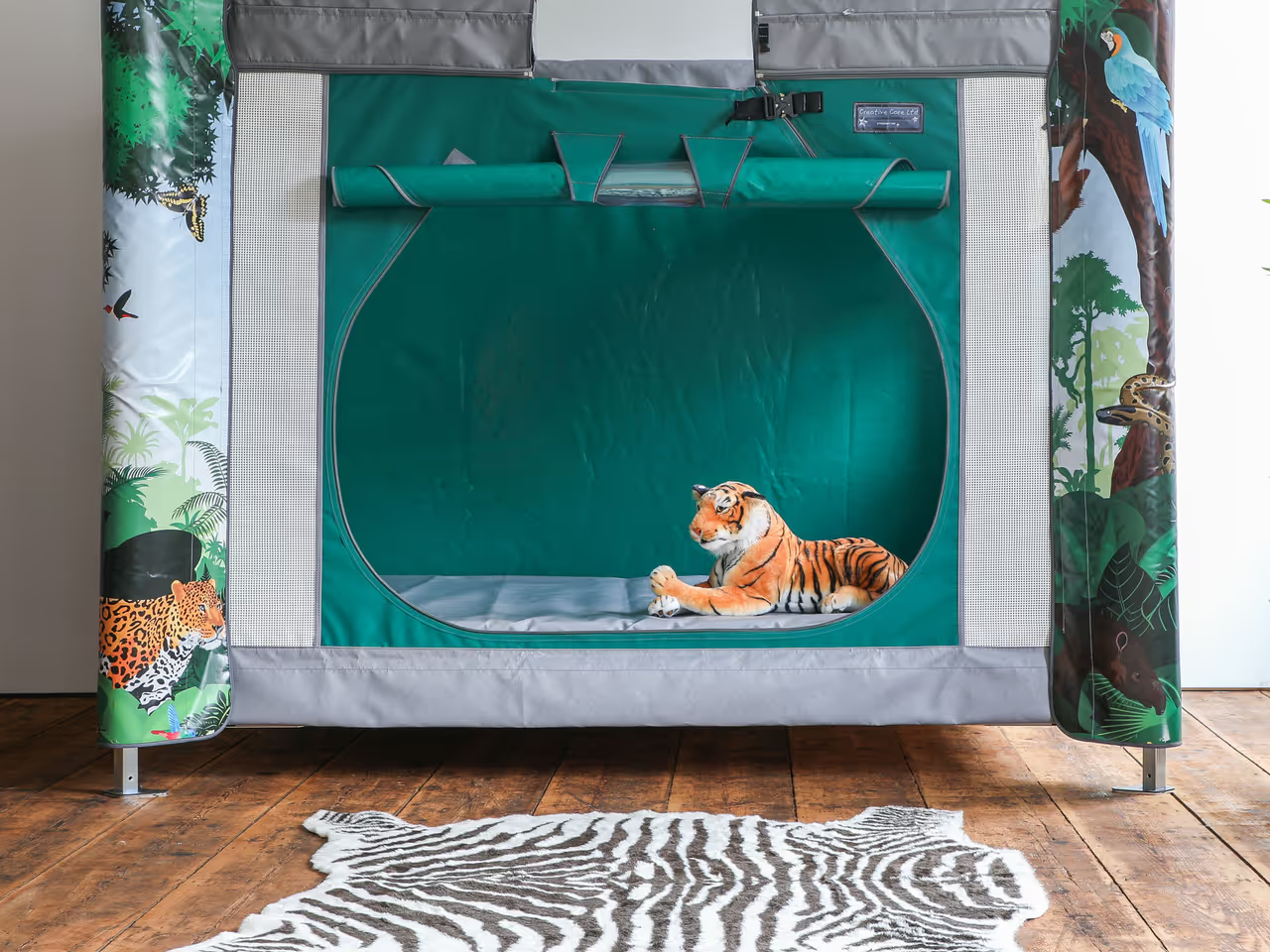For many people with autism and other related conditions, achieving regular and restful sleep can be a significant challenge. Creative Care has many years of experience in building enclosed safety beds that help people with special needs and their famlies get a better and more peaceful night's sleep.
Understanding Autism and Sleep Issues
Autism Spectrum Disorder (ASD) is a complex developmental condition that involves persistent challenges in social interaction, speech, and nonverbal communication. Many people with autism also experience significant issues with sleep. Studies suggest that between 40% and 80% of children with autism have difficulty sleeping.
The reasons for these sleep issues are varied and can include sensitivity to environmental factors, difficulty with self-regulation, and co-occurring medical issues. The impact of poor sleep can be significant, affecting cognitive function, learning, attention, and behavior.
Sleep problems in individuals with autism can manifest in various ways, including difficulty falling asleep, inconsistent sleep routines, restlessness or poor sleep quality, and waking up frequently during the night. These issues can lead to daytime sleepiness, increased behavioral issues, and can significantly impact the quality of life for both the individuals with autism and their families.
The Science of Sleep
Sleep is a complex biological process, while we may think of sleep as a time when the mind and body shut down, in reality, it's a period of important biological activity. Sleep is divided into multiple stages, including Rapid Eye Movement (REM) sleep, where dreaming occurs, and non-REM sleep, which has three different stages. Each stage is important for different aspects of brain function and health.
Sleep issues can disrupt these stages, leading to a range of health and cognitive impacts. For individuals with autism, these disruptions can exacerbate other challenges associated with the condition, making daily life even more difficult.
Understanding the science of sleep is crucial in understanding why enclosed safety beds can be so beneficial. By creating an environment conducive to each stage of sleep, these beds can help individuals with autism get the restful sleep they need.
The Role of Enclosed Safety Beds
Do you remember that magical feeling as a child when you'd build an epic blanket fort or camp out in a tent in the back garden? There was something so cosy and safe about being enclosed in your own little den, separated from the rest of the world. That's the same feeling enclosed beds provide for autistic children who struggle with sleep issues.
Our beds are more than just a place to sleep. They are a tool that can help manage the sensory sensitivities and self-regulation difficulties that many people with autism experience. By providing a safe, secure, and comfortable environment, our enclosed safety beds can help reduce the anxiety and sensory overstimulation that can interfere with sleep.
How Enclosed Safety Beds Improve Sleep Quality
By enveloping the child in an enclosed space, our beds create a womb-like environment that feels cosy and protected. The outside world is blocked out, allowing the occupant to unwind in a calm, peaceful space. It's like being gently cradled back to the safety of the womb!
Our beds can help reduce sensory disruptions, promote self-soothing behaviors, and ultimately, improve sleep quality. While every individual with special needs is unique and may have different needs, Creative Care beds offer a promising solution for many families struggling with sleep issues.
Interested in learning more about our enclosed safety beds? Get in touch with our team for more information. We're here to help you find the best sleep solution for your loved one with special needs.
